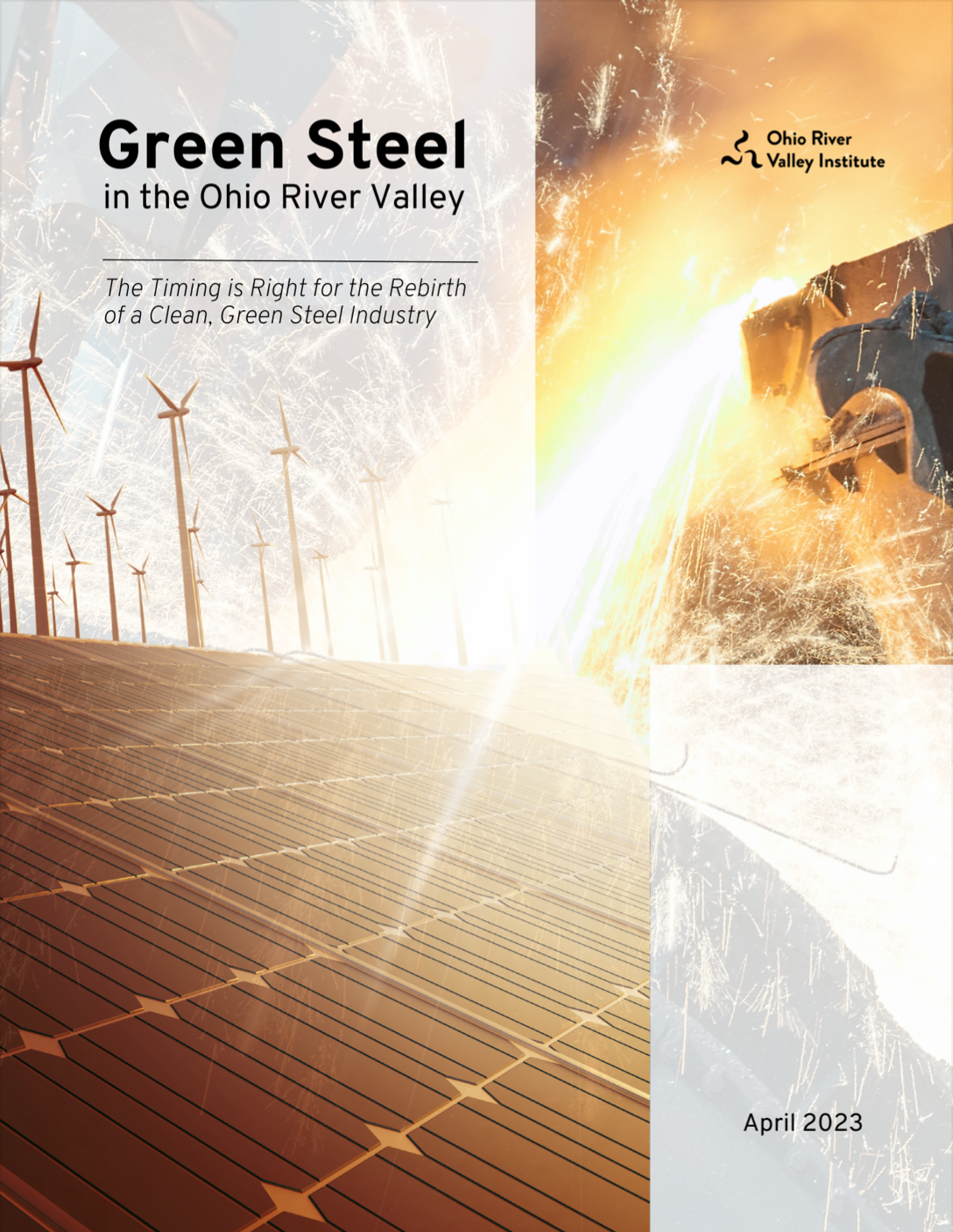For more than a century, steel has played an important role in the economy and culture of the Ohio River Valley. But the traditional method of making steel, known as BF-BOF (blast furnace-blast oxygen furnace), requires lots of energy and produces lots of climate-warming emissions. The iron and steel sector is currently responsible for about 7% of global greenhouse gas (GHG) emissions, according to the International Energy Agency.
Shifting to fossil fuel-free steelmaking could reduce greenhouse gas emissions, boost jobs, and grow the region’s economy. Fossil fuel-free DRI-EAF (direct reduced iron-electric arc furnace) steelmaking uses green hydrogen—created with wind and solar energy—to make steel with nearly zero climate-warming emissions.
Investing in fossil fuel-free steelmaking is a win for the climate and the economy. This report looks at Mon Valley Works, a steelmaking facility in southwestern Pennsylvania, as a model for transitioning from carbon-intensive BF-BOF steelmaking to fossil fuel-free DRI-EAF steelmaking.
Key takeaways:
- A transition to fossil fuel-free steelmaking could grow total jobs supported by steelmaking in the region by 27% to 43% by 2031, forestalling projected job losses. Regional jobs supported by traditional steelmaking are expected to fall by 30% in the same period, data show.
- Transitioning to fossil fuel-free steelmaking will cut Pennsylvania’s industrial sector emissions by 4 million metric tons of CO2e per year, improving quality of life and saving the state $380 million in health, community, and environmental costs.
- The Ohio River Valley is uniquely positioned to become a decarbonized industrial hub. A skilled workforce with applicable manufacturing experience, ready access to water and iron ore, and high potential for solar, wind, and green hydrogen development situate the region to lead a growing green manufacturing industry.
- Billions in federal funding from the Bipartisan Infrastructure Law, the Inflation Reduction Act, and the CHIPS and Science Act will boost demand for American-made steel while supporting worker retraining programs, hydrogen infrastructure, and renewable energy development.

